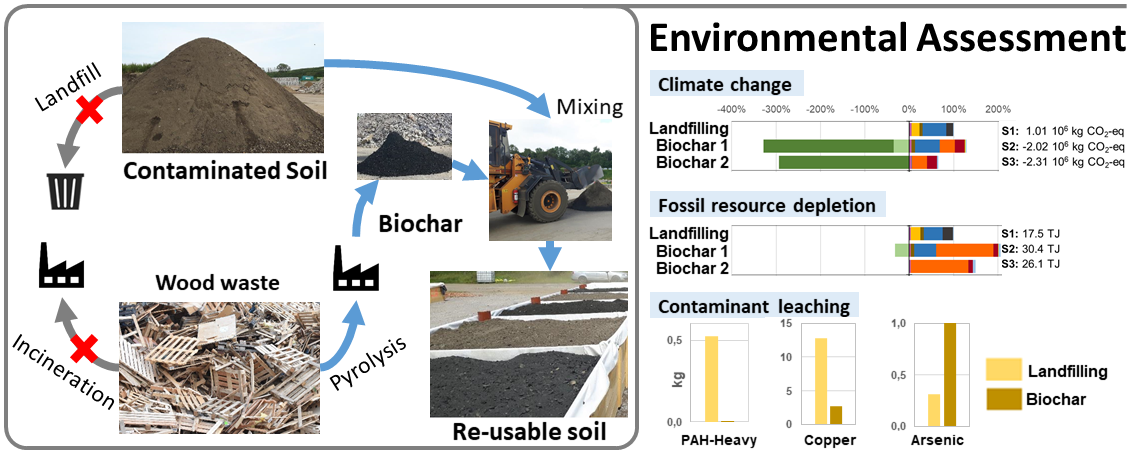
Research highlights
- Användning av biokol för sanering av jordar jämfördes med deponering av förorenad jord.
- Biokolsbehandlingen innebar stora reduktioner av CO2-utsläpp jämfört med deponering.
- 100-års läckage av PAH och Cu var mycket mindre i behandlade jordar än i deponi.
- 100-års läckage av flera andra metaller var för osäkert för att kunna model assumptions.
- Biokol för sanering av jordar är en lovande teknik men kräver fallspecifik riskbedömning.
Resurser
Referens
Papageorgiou A, Azzi ES, Enell A, Sundberg C (2021) Biochar produced from wood waste for soil remediation in Sweden: carbon sequestration and other environmental impacts. Science of the Total Environment 145953. DOI: 10.1016/j.scitotenv.2021.145953
Presentationer
Studien har presenterats vid en konferens och ett flertal workshops. Slides från presentationerna kan laddas ned nedan:
Projektrapport
En projektrapport har också publicerats: Enell A, Azzi ES, Berggren Kleja D, et al (2020) Biokol - från organiskt avfall till resurs för nyttiggörande av jordavfall, Syntesrapport, Statens geotekniska institut, SGI, Linköping, 2020-11-09. Linköping
Ladda ned som PDFModell
Modellering utfördes i Microsoft Excel och Python, med brightway2. Filerna finns tillgängliga vid efterfrågan.
Inspelningar
Titta på en presentation av artikeln.
Vill du läsa mer?
Abstract
The use of biochar to stabilize soil contaminants is emerging as a technique for remediation of contaminated soils. In this study, an environmental assessment of systems where biochar produced from wood waste with energy recovery is used for remediation of soils contaminated with polycyclic aromatic hydrocarbons (PAH) and metal(loid)s was performed. Two soil remediation options with biochar (on- and off-site) are considered and compared to landfilling. The assessment combined material and energy flow analysis (MEFA), life cycle assessment (LCA), and substance flow analysis (SFA).
The MEFA indicated that on-site remediation can save fuel and backfill material compared to off-site remediation and landfilling. However, the net energy production by pyrolysis of wood waste for biochar production is 38% lower than incineration.
The LCA showed that both on-site and off-site remediation with biochar performed better than landfilling in 10 of the 12 environmental impact categories, with on-site remediation performing best. Remediation with biochar provided substantial reductions in climate change impact in the studied context, owing to biochar carbon sequestration being up to 4.5 times larger than direct greenhouse gas emissions from the systems. The two biochar systems showed increased impacts only in ionizing radiation and fossils because of increased electricity consumption for biochar production. They also resulted in increased biomass demand to maintain energy production.
The SFA indicated that leaching of PAH from the remediated soil was lower than from landfilled soil. For metal(loid)s, no straightforward conclusion could be made, as biochar had different effects on their leaching and for some elements the results were sensitive to water infiltration assumptions. Hence, the reuse of biocharremediated soils requires further evaluation, with site-specific information.
Overall, in Sweden’s current context, the biochar remediation technique is an environmentally promising alternative to landfilling worth investigating further.
Frequently asked questions [under construction]
A compilation of comments and questions arising from disucssing this article. Don’t hesitate to contact us if you have questions.